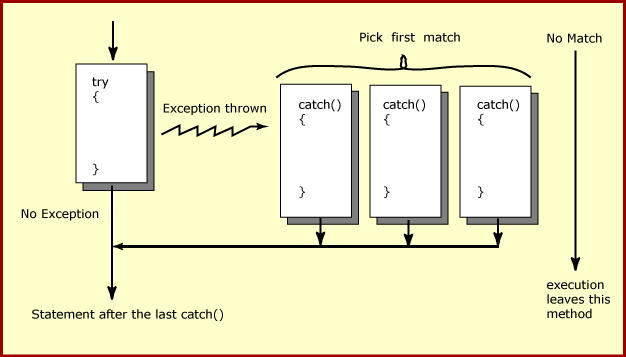How try and catch Work
Here is how try and catch work:

- When an exception is thrown by a statement in the
try{}block, thecatch{}blocks are examined one-by-one starting starting with the first. - The first
catch{}block to match the type of the exception gets control. - Only one
catch{}block gets control. - If no
catch{}block matches the exception, none is picked, and execution leaves this method (just as if there were notry{}block.) - The most specific exception types should appear first in the structure, followed by the more general exception types.
- The statements in the chosen
catch{}block execute sequentially. After the last statement executes, control goes to the first statement that follows thetry/catchstructure. - Control does not return to the
tryblock.